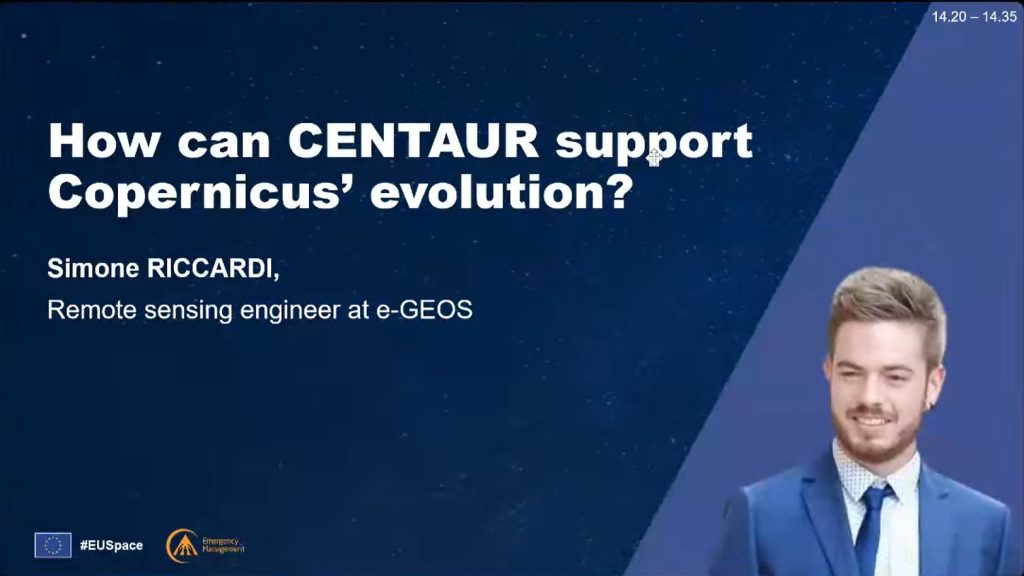On 11 October, we have attended the Copernicus EMS Annual Conference, delivering a keynote on our project.
This high-level event, organised by the European Commission’s Joint Research Centre, and brought together experts from the European Commission and international organisations. Participants discussed the EU tools and policies available for anticipating risks and managing crises such as droughts, wildfires and floods.
In addition, the event provided a platform to showcase ground-breaking initiatives funded by the European Union in a dedicated session for presentations of Horizon Europe projects related to Copernicus and emergency management activities. The session highlighted our project CENTAUR, SEED-FD and OVERWATCH projects which are leveraging cutting-edge technologies to address pressing challenges in emergency management, climate resilience, disaster preparedness, and early warning systems. Project representatives shared insights, progress and collaborative efforts which are contributing to advancing Europe’s capacity to respond to global crises through research and innovation.

The CENTAUR Horizon Europe project was introduced by Simone Riccardi – a representative of our technical team – who described the ongoing work in developing crisis indexes and alerts for the improvement of early warning and monitoring systems related to urban flooding. In this context, he presented the use cases on which our technical team is working, with a focus on the innovative flood-related indicators and indexes currently under validation.
Furthermore, he presented the ways in which CENTAUR plans to strengthen and enrich the Copernicus Emergency Management Service (CEMS) the product portfolio.
CENTAUR’s contributions to this remarkable event underlined the importance of using advanced satellite data and monitoring systems to improve anticipatory responses to emergencies. This participation not only increases the project’s visibility within the disaster management community, but also reinforces its role in supporting essential efforts to reduce disaster risks and improve the security of vulnerable populations.
The recording of our presentation at the CEMS Annual Conference is available here.

